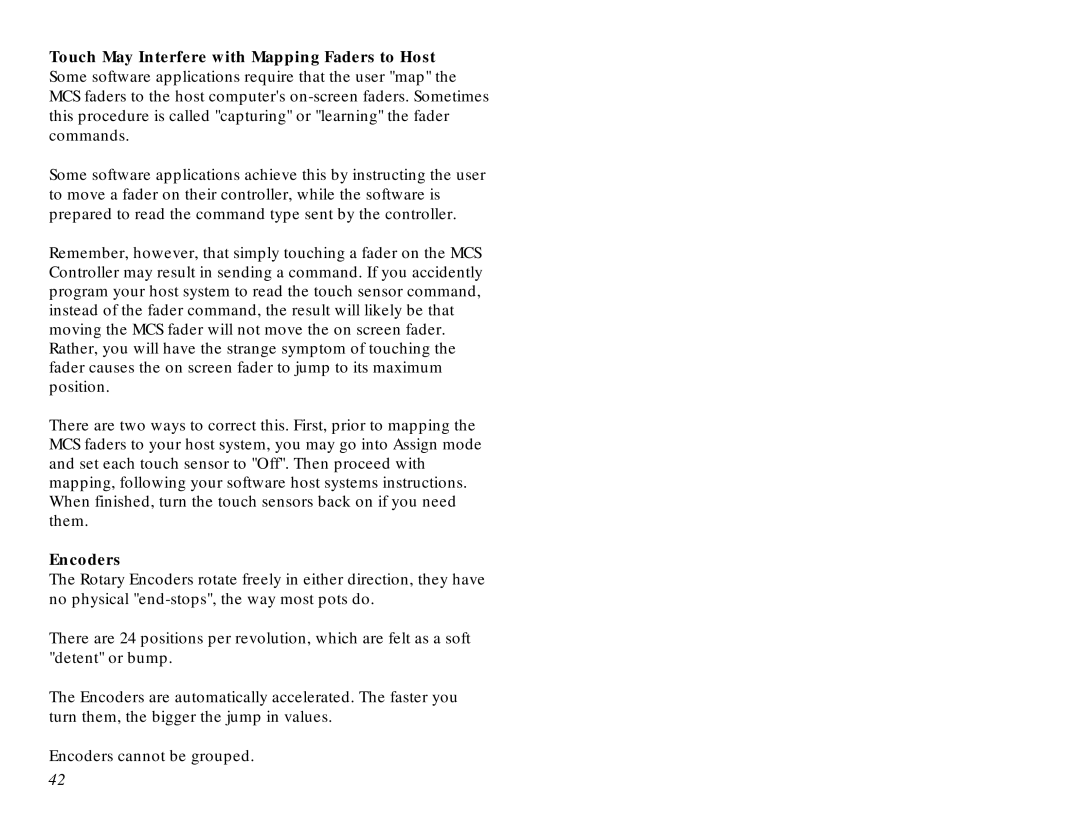Touch May Interfere with Mapping Faders to Host Some software applications require that the user "map" the MCS faders to the host computer's
Some software applications achieve this by instructing the user to move a fader on their controller, while the software is prepared to read the command type sent by the controller.
Remember, however, that simply touching a fader on the MCS Controller may result in sending a command. If you accidently program your host system to read the touch sensor command, instead of the fader command, the result will likely be that moving the MCS fader will not move the on screen fader. Rather, you will have the strange symptom of touching the fader causes the on screen fader to jump to its maximum position.
There are two ways to correct this. First, prior to mapping the MCS faders to your host system, you may go into Assign mode and set each touch sensor to "Off". Then proceed with mapping, following your software host systems instructions. When finished, turn the touch sensors back on if you need them.
Encoders
The Rotary Encoders rotate freely in either direction, they have no physical
There are 24 positions per revolution, which are felt as a soft "detent" or bump.
The Encoders are automatically accelerated. The faster you turn them, the bigger the jump in values.
Encoders cannot be grouped.
42
